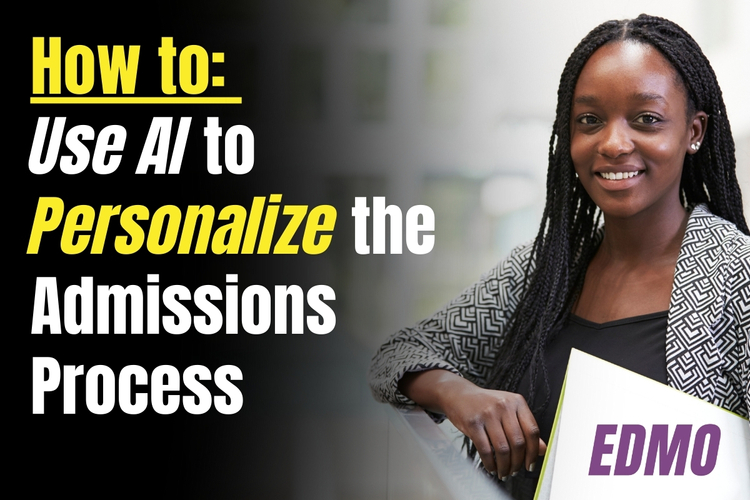Searching for the latest technological innovations reshaping the K-12 education ecosystem? Look no further as we take a deep dive into the power of technology into education. This blog will take you through the sweeping technological and structural tools and trends that are transforming the world of education.
The global EdTech market has been steadily growing, and 2024 is no exception. Valued at $142.37 billion in 2023, the market is projected to expand at a CAGR of 13.4% through 2030. This growth reflects the increasing role of education technology as an essential part of modern learning worldwide.
In the education sector, technology is not here to replace educators but to assist them in engaging students, offering personalized learning, and enhancing the learning environment. Technology enables teachers to transform how students learn and interact with both teachers and peers, creating new opportunities for growth and success.
This K-12 technology guide offers a comprehensive list of the many benefits of using educational technology. It also shares several cutting-edge platforms, apps, tools, and trends that enable educators and students to stay motivated and accelerate learning.
Why use technology for learning?
Over 70% of colleges plan to introduce one or more online undergraduate programs within the next three years. This highlights the increasing acknowledgment of technology’s role in reshaping education, extending beyond K-12 schools to higher education. Technology is driving improvements in learning experiences and creating more opportunities for students globally.
For students, K-12 technology offers-
- Increased collaboration
- Better time management
- 24×7 support
- Personalized curriculum
- Real-world readiness
Teachers also benefit from K-12 technology in many ways-
- Better classroom management
- Going paperless
- Automated tasks
- Student insights
- Better time management
Here are a few cutting-edge tools driving the aforementioned changes mentioned earlier in the education industry.
Tools & technologies for K-12
1. Active learning spaces
- Instructional spaces have traditionally been teacher-centric, but educators have recently recognized that students aren’t always learning as effectively as they could in these settings. To address this, universities introduced the lecture-lab combination to foster a more dynamic learning environment.
- Active learning spaces have emerged as a key solution to this challenge. These spaces, designed with round or curved tables and moveable seating, encourage student interaction and collaboration. By promoting group work and peer discussions, active learning spaces help keep students engaged and enhance their understanding of new concepts.
- As education continues to evolve, these spaces are becoming more common in modern classrooms, offering a flexible and interactive environment that supports a student-centered approach to learning.
2. Computational thinking
- Computational thinking has become a highly valued skill today.
- A student who has mastered critical thinking, problem-solving, abstraction, decomposition, and pattern recognition, is more likely to think logically about a problem, break it down into manageable parts, get past them, and even predict what may happen in the future.
- This helps students land more lucrative employment opportunities and better manage their social relationships.
- Educators can find a variety of resources that help impart these skills, many of which are, in fact, free!
3. Open Educational Resources (OERs)
- Open Educational Resources save educators’ time by providing study materials that have been created from scratch.
- These lesson plans, videos, blogs, and digital books have helped them customize teaching and share knowledge in various forms with peers across the country.
- Hence, OERs provide a three-forked benefit – saving teachers’ time and money while remixing and redistributing the study material.
- A few sources where one can find educational material include OpenEd, ShareMyLessons, Google Advanced Search, CC Search, Pixabay, BookDash, TED, Open Course Library, and more.
4. Online tutoring
- Online tutoring has become an essential educational tool, providing students with access to personalized instruction through various online platforms.
- It helps educators adopt a more structured and methodical teaching technique that aligns with the varying aptitude levels and expectations of students, and helps students access and assess knowledge at their own pace.
- In addition, structured tests, quizzes, and other forms of assessments can also be conducted online, while allowing tutors to share their feedback seamlessly.
- With advancements in technology, online classes have become as efficient as offline classes. Educators can present their study material on “whiteboards,” and real-time doubt sessions and chatbots can enhance the overall classroom experience. This not only makes teaching easy but also strengthens the bond between the teachers and their students.
5. Remote assessment
- Remote assessment became a key tool alongside online tutoring, enabling schools to conduct exams remotely while ensuring academic integrity.
- Allowing schools to conduct exams remotely while also ensuring that students do not participate in any suspicious activities, remote assessment platforms aided test-takers in assessing their pupils in a hassle-free manner.
- This software, which uses a combination of a customized user interface, visualization tools, and (sometimes) machine learning models, can perform real-time proctoring at scale effectively.
- This helps schools reduce the cost of conducting examinations while also saving the staff time and focusing on the more critical tasks.
6. Infrastructure
- Infrastructure necessarily doesn’t stand for captivating buildings, huge sports grounds, or technologically-abled classrooms. It goes way beyond its traditional definition.
- Online teaching has brought forth the need of strengthening the cloud infrastructure, which can support the increasing demand for distance learning programs.
- Bringing in a cost-efficient, cloud-based data center with high-security capabilities can increase the efficiency and flexibility of online education.
- This would also enable institutions to rid themselves of complex hardware and operate on easy-to-use software that brings everything together in “one” place.
7. Analytics
- Analytics involves collecting individual student data and using it to understand each student’s needs.
- Every student has different learning capabilities. Teachers can analyze the learning frequencies and patterns of their students, and use that data to draft lesson plans with specific students in mind. Moreover, by looking at how students performed during an assignment, teachers can identify which students took longer than average to solve a problem, and need focused attention.
- Analytics can also help institutions track the classroom engagement levels of each student. Extra materials, audio-visual aids, and other resources can be further employed to make the learning process easier.
- Analytics plays an integral role in measuring and comparing students’ performances over time, thereby helping institutions understand and improve their year-on-year student success rates.
8. Digital curriculum
img-alt;a-laptop-showing-e-learning-platform;Digital curriculums can be modified basis the requirements of students and teachers.
- Rather than teaching students the traditional way, schools are looking to introduce a more comprehensive study technique that will help students cope with increasing global competition.
- To achieve this, Digital Curriculums have been introduced. These online teaching software help teachers plan their lessons effectively and also maximize student understanding
- A Digital Curriculum should be executed in four different phases-
1. Exploring: These activities are designed and led by teachers with an aim to increase student engagement and interest in a particular subject.
2. Learning and Practicing: Along with learning, practice is also an important element of the learning process. eLearning lessons, quizzes, and other forms of practice can help students grasp new concepts and upskill.
3. Reflecting: This phase includes activities designed and led by teachers that aim at discussing and reviewing important concepts. It allows students to connect newer concepts with their existing knowledge and experiences, helping them retain their learnings for a longer period of time.
4. Reinforcing: Last but not least, this phase is considered the testing phase, as students apply their theoretical knowledge to solve real-world problems through individual or group projects. - Following are some of the points that describe how a Digital Curriculum is designed and state its advantages-
1. Personalized Learning Experience: The first and foremost advantage of a Digital Curriculum is that students can learn at their own pace and can also select the course type that suits them best.
2. Preparing Students for a Digital World: From our workspaces to homes, everything is becoming digitized. In order to prepare children for the digital world, a Digital Curriculum has to be integrated into the education system.
9. Security
- The education sector is facing an alarming rise in cybersecurity risks as it enters 2025. According to a recent analysis by Moody’s, the cyber risk rating for education and nonprofit organizations has increased from “moderate” to “high” in the past two years.
- With more and more information transforming itself into a digital format, it has become vital to secure cloud-based systems so that no confidential information gets leaked.
- Apart from digital security, ensuring physical security is also important. Situations that demand immediate action—like pandemics, natural disasters, shooting incidents, and harassment—can arise.
- Thus, focusing on the five standard steps to increase the physical security of the educational institution is very important. These include Prevention, Protection, Mitigation, Response, and Recovery.
10. Personalized learning
- One-size-fits-all learning is a thing of the past. Schools are now working to provide a more personalized learning experience to students.
- Personalized learning can help teachers understand their wards’ strengths and weaknesses, and enable students to explore and build skills in subjects of their interest.
- It can be offered in many ways-
1. Online resources, like textbooks and workbooks.
2. A broad collection of optional courses makes it easier for students to choose the path that is best for them.
3. Real-time conversations with teachers and classmates.
4. One-on-one doubt-solving sessions.
5. An individual learning plan for each student, built using data collection and analytics.
6. Vibrant school communities, academic support, easy-to-use learning tools, etc.
What’s next?
K-12 education is looking at a revolutionary technological transformation. With cost-effective tools such as online tutoring, remote assessment, and 24×7 available chatbots delivering lessons online, learning has become easier and hassle-free. With these and several more newly emerging technologies, universities now have the resources and means to reach global heights.







